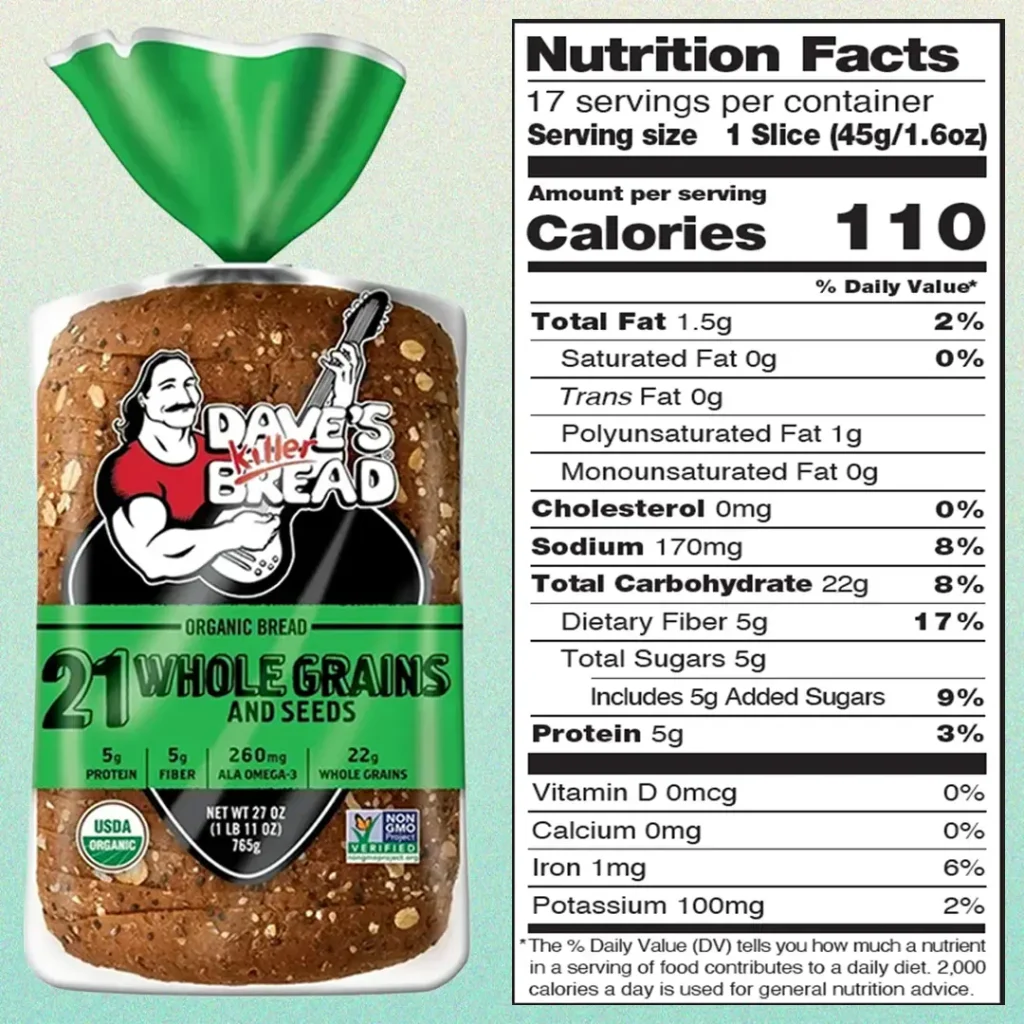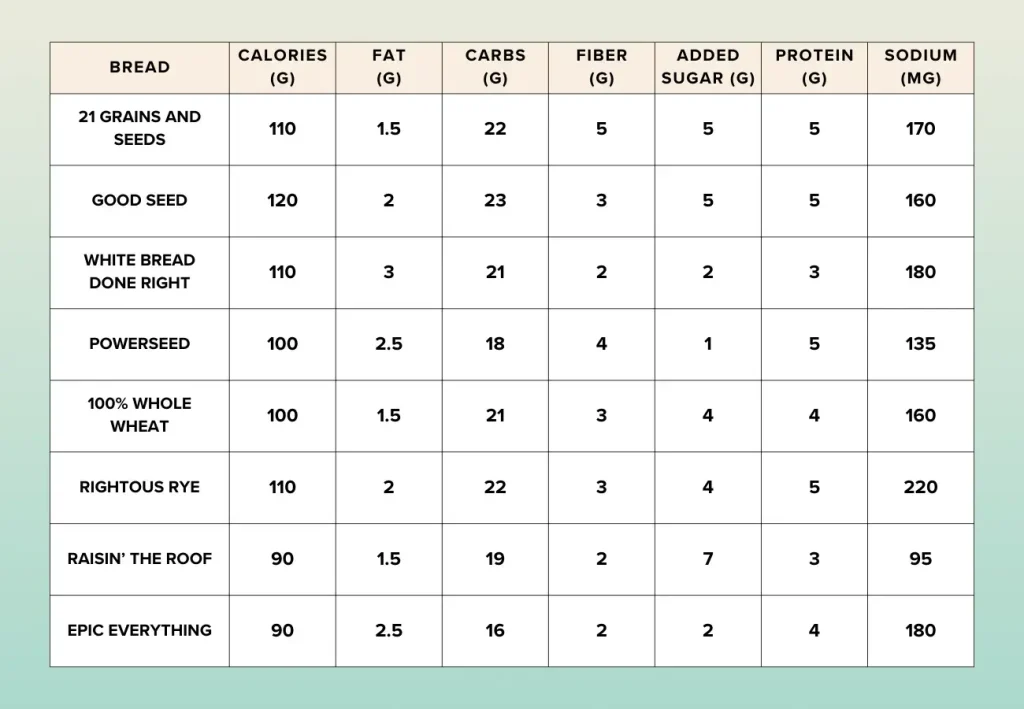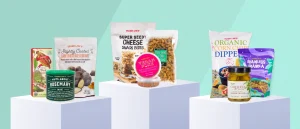Wait, Is Dave’s Killer Bread Healthy?
- By Matthew Kadey, M.S., R.D.
- April 18, 2024
There’s a lot of healthy sounding loaves in the bread aisle: whole grain, whole wheat, sourdough, and gluten-free bread options abound. Dave’s Killer Bread appears to be one of the healthier alternatives on store shelves. Plus, it tastes great. But, is Dave’s Killer Bread healthy?
What’s in Dave’s Killer Bread?
There are several varieties of Dave’s Killer Bread, each with its ingredients and nutritional nuances. Here’s everything you need to know about the 21 Whole Grains and Seeds—the brand’s most popular loaf.
Dave’s Killer Bread ingredients
Highlights of the 21 Whole Grains and Seeds loaf include water, organic whole wheat flour, cracked whole wheat, and tons of grains and seeds. That’s an upgrade from many whole grain breads which use mostly refined, white wheat and some whole grains to stamp “whole grain” on the label.

All of the ingredients in Dave’s Killer Bread are organic and non-GMO, which may be one reason for the bread’s higher price tag. It’s also free of preservatives often found in store-bought bread like calcium propionate, sodium benzoate, and sorbic acid. These preservatives are safe according to the FDA, however emerging research suggests they may impact insulin sensitivity, cognitive functioning, and metabolism (1,2, 3).
Dave’s Killer Bread nutrition information
Here’s how the nutrition breaks down for a single slice of 21 Whole Grains and Seeds:

Calories
Dave’s Killer Bread is higher in calories than most other sliced breads, with 110 calories per slice. For instance, a slice of Wonder Whole Wheat or Nature’s Own 100% Whole Wheat is only 60 calories. The high calorie count is thanks to each thick slice being packed with a motherload of seeds—which add calories but also fiber. The brands’ thin-sliced option is the same delicious recipe in a 70-calorie slice.
Protein
The five grams of protein in each serving is comparable to other whole grain options you’ll find at the market. For example, a slice of Pepperidge Farm Multigrain also has 5 grams of protein, while a slice of Nature’s Own 100% Whole Wheat has 4 grams.
Fiber
Dave’s Killer Bread contains 17 percent of your daily fiber target, with five grams per slice. Most other bread brands clock in at only two to three grams per slice on average.
Sugar
Dave Killer Bread’s main downside: A single slice contains five grams of added sugar. That’s more than you’ll find in other healthy options like Ezekiel 4:9 Sprouted Whole Grain (which contains zero grams of added sugar) and Nature’s Own 100% Whole Wheat (less than one gram). Meaning: a single piece of toast will knock out 13% of your daily sugar target, and a two slice sandwich about 26% (4).
Sodium
A slice of the 21 Whole Grains and Seeds contains 170 mg. Many whole grain breads have 100 to 110 mg per slice.
Is Dave’s Killer Bread Healthy?
Dave’s Killer Bread is a healthier choice than most processed breads. It touts relatively high levels of protein and fiber (five grams of both per slice), whole grains, and organic, non-GMO ingredients.
However, the cult-favorite 21 Grains and Seeds loaf is a little high in added sugar (five grams) and sodium (170 mg), compared to other healthy options. These amounts aren’t a deal breaker, but they’re higher than other healthy bread like Ezekiel (0 grams of sugar and 75 mg of sodium) or Silver Hills (1.5 grams of sugar and 140 mg of sodium).
What is the Healthiest Dave’s Killer Bread?
Here’s how all of the brand’s breads from 21 Grains and Seeds to Raisin’ the Roof compare:

The Powerseed variety is the healthiest Dave’s Killer Bread you can buy. It’s lower in added sugar than the brand’s original 21 Grains and Seeds, but still contains healthy amounts of fiber (4 grams) and protein (and 5 grams).
The unhealthiest: Raisin’ the Roof. It packs the most added sugar (7 grams) and least fiber (2 grams).
How to Pick Healthier Bread
Dave’s Killer Bread not cutting it? Here’s what to look for on bread labels when the loaf paralysis hits at the grocery store.
Quality ingredients
The general recommendation is that fewer ingredients is better. But breads like Dave’s Killer Bread are an exception since ingredients like seeds up the nutritional value. Overall, look for quality ingredients you can pronounce.
Fiber
Most of us fail to get enough fiber, and bread is an easy opportunity to add more. Look for slices with at least four to five grams of fiber each.
Low sugar
Added sugar has been linked to inflammation and obesity (5, 6), so minimize how much you get through any source, including bread. Ideally, a single slice should have no more than a few grams of sugar.
Whole grain
Some label claims like “multi-grain,” “7-grain,” and “made with whole grains” are just marketing for products made with mostly white flour. Look for breads that are made with mostly whole wheat flour, include whole wheat as the first ingredient, or are 100% whole grain. Save for the White Bread Done Right, each of Dave’s Killer Breads is considered whole-wheat.
Made with sprouted grains
Sprouting increases the nutrient and antioxidant content of whole grains like wheat and barley, while reducing levels of the anti-nutrient phytic acid—which may allow your body to absorb more of the micronutrients in each slice (7, 8). Solid sprouted wheat picks include Trader’s Joes Sprouted Wheat Sourdough, any option from from Silver Hills, and most Ezekiel breads (including the most popular 4:9 Sprouted Whole Grain Bread) along with Dave’s Killer Bread Thin-Sliced Sprouted Whole Grains.
Sourdough
Thanks to its fermented dough, sourdough bread boasts higher levels of amino acids and phenolic compounds (including antioxidants), which may reduce blood sugar spikes (10). Fermentation also reduces gluten which may make it easier on gluten-sensitive stomachs (11).
Most supermarket sourdough skips the fermentation process to save time, adding ascorbic acid or vinegar to give bread a comparably sour taste. The healthiest sourdough loaves are made with whole grains like rye flour.
References
1. Adler, G. et al. (2021). Acute Effects of the Food Preservative Propionic Acid on Glucose Metabolism in Humans.
2. Piper, P. et al. (2018). Potential Safety Issues Surrounding the Use of Benzoate Preservatives.
3. Chen, C. et al. (2020). Food Preservative Sorbic Acid Deregulates Hepatic Fatty Acid Metabolism.
4. American Heart Association (2021). Added Sugars.
5. American Heart Association (2023). Shaking the Salt Habit to Lower High Blood Pressure.
6. Ma, X. et al. (2022). Excessive Intake of Sugar: An Accomplice of Inflammation.
7. Faruque, S. et al. (2020). The Dose Makes the Poison: Sugar and Obesity in the United States—A Review.
8. Benecasa, P. et al. (2019). Sprouted Grains: A Comprehensive Review.
9. Singh, A. et al. (2015). Enhancement of Attributes of Cereals by Germination and Fermentation: A Review.
10. Koistinen, V. et al. (2018). Metabolic Profiling of Sourdough Fermented Wheat and Rye Bread.
11. Greco, L. et al. (2011). Safety for Patients with Celiac Disease of Baked Goods Made of Wheat Flour Hydrolyzed During Food Processing.












